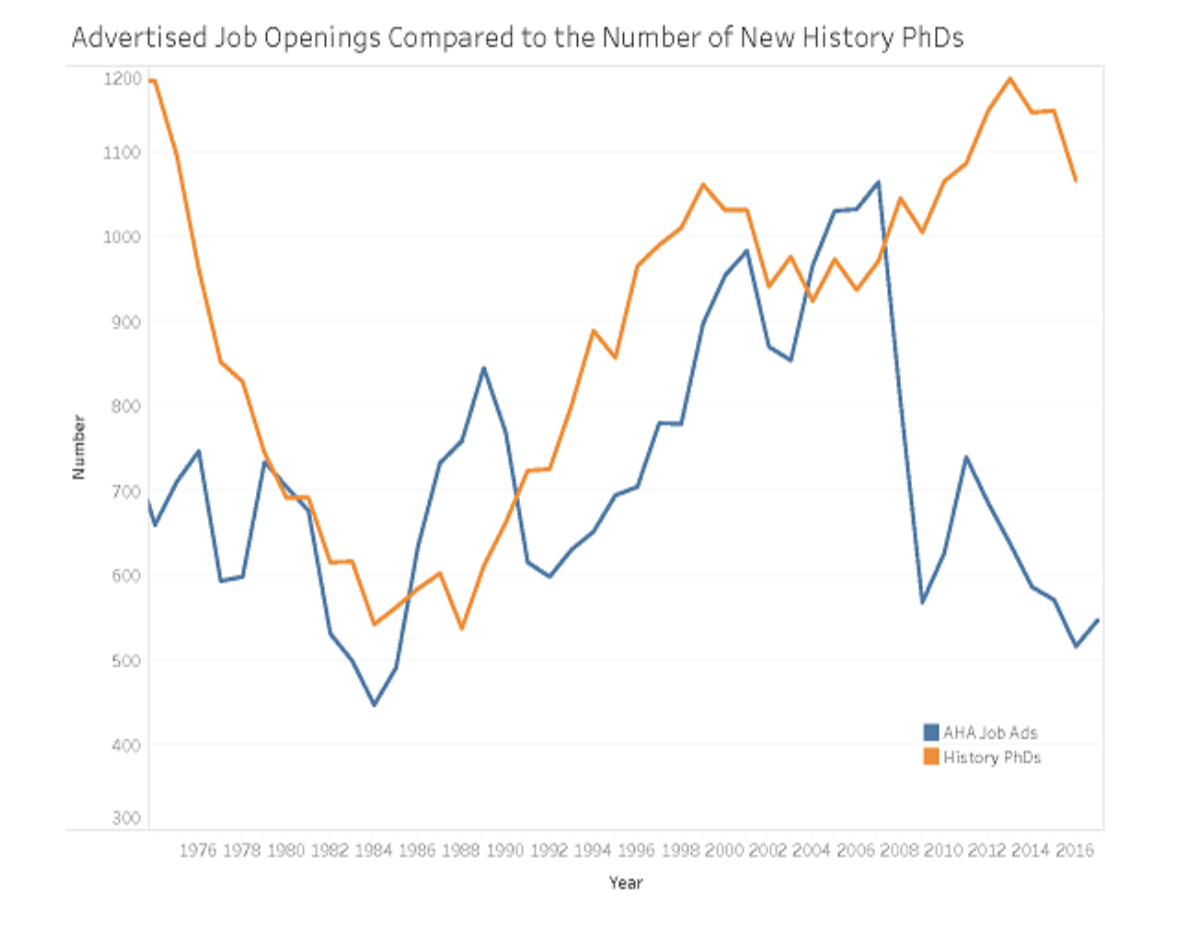You have /5 articles left.
Sign up for a free account or log in.

Getty Images
The faculty job market in history stabilized in 2017-18 after several years of steep declines, according to new data from the American Historical Association.
The AHA bases its annual jobs report on advertising figures for its career center and H-Net’s Job Guide. While it’s not the entire jobs outlook for historians -- about a quarter of whom work outside academe -- the report is still good news for them, for now. (The report also doesn't include all academic jobs, but is generally considered representative of trends in the field.)
Listings for full-time positions in the AHA’s career center jumped 8 percent year over year, and unique positions advertised in either venue grew by nearly 2 percent. More than 50 percent of jobs, including those off the tenure track, were at research universities -- where many Ph.D.s say they want to work. Postdoctoral fellowships also continued to grow, making up 21 percent of the jobs listed on each board.

Source: American Historical Association
In basic numbers, the AHA career center hosted ads for 548 full-time openings. Tenure-track positions increased from 295 to 320 last year. The total number of unique full-time positions advertised on both job boards was less impressive, in terms of growth, however: some 1,084, from 1,078 the year prior.
“Seen from this larger perspective, faculty hiring in the discipline did little more than tread water,” Dylan Ruediger, AHA’s coordinator for career diversity and institutional research, wrote in an analysis of the data.
Still, he said, “This broad-based but modest level of growth in advertisements is certainly better news than last year’s steep declines.”
Hiring by field, based on AHA career center data, looks similar to years past. But hiring for Africanists and historians of Asia, relatively stable recently, shows “clear signs of cooling down, both in absolute numbers and as a percentage of advertised positions,” Ruediger wrote. U.S. history, meanwhile, heated up in terms of numbers. Some 18 percent of positions were in open or multiple fields.

James Grossman, executive director of the AHA, sad in a statement that the report "signals the AHA's continued commitment to providing transparent and comprehensive data about national trends in academic employment opportunities for history Ph.D.s.”
Robert Townsend, director of the American Academy of Arts and Sciences’ Washington office, also tracks outcomes for Ph.D.s. He said the AHA’s data adds to a series of recent reports suggesting “some stabilization” in the humanities job market, including in classics and religion. Both of those reports showed small -- 4 percent -- increases in job listings, he said, noting that a recent philosophy jobs report was flat for the fourth year in a row.
That said, however, job listings in every discipline remain around 30 percent below 2008 levels, “even as the number of new Ph.D.s remains largely unchanged,” he added. “So there is still considerable work to be done.”










